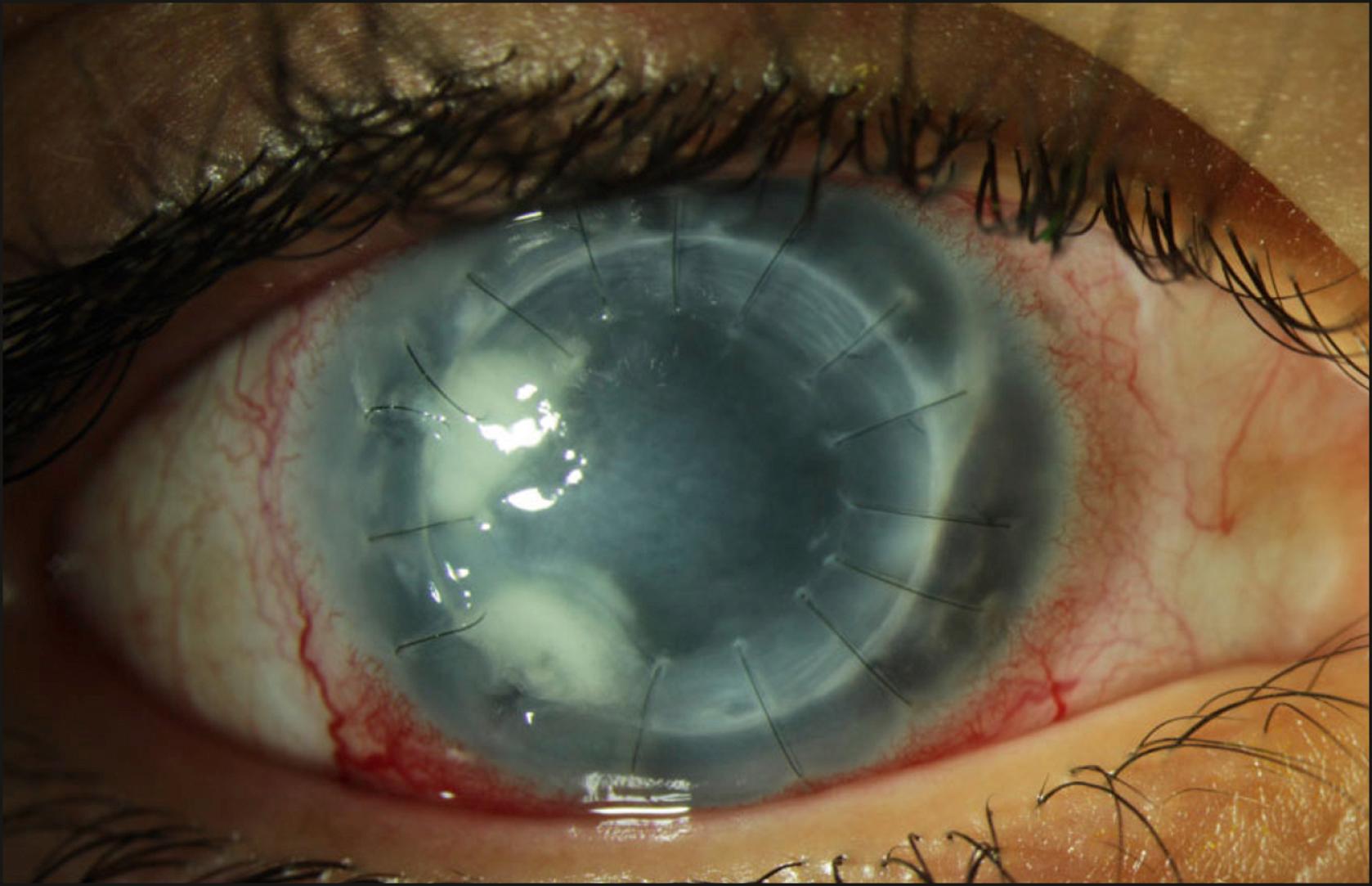Physical Address
304 North Cardinal St.
Dorchester Center, MA 02124
The term cornea ulcer can refer to a wide variety of infectious and noninfectious entities.
The evaluation of a corneal ulcer requires a stepwise approach including history, examination, laboratory testing, and careful analysis of this data to guide management.
A directed history can identify risk factors for particular causes of ulceration.
A detailed examination can identify features suggestive of particular etiologies.
Corneal smears and cultures are the “gold standard” for diagnosis of suspected infectious keratitis.
In complex cases, repeating these steps may be necessary to ensure appropriate ongoing management.
Ulceration is defined as “a site of inflammation where an epithelial surface . . . has become necrotic and eroded.” The term “corneal ulcer” is frequently used clinically as a synonym for infectious keratitis. However, many different pathogens can cause corneal ulceration, as can several noninfectious etiologies. Proper evaluation of a corneal ulcer requires a careful, systematic, stepwise approach: (1) thorough history including pertinent positive and negative risk factors; (2) understanding the pace of evolution of disease; (3) clinical examination looking for distinctive corneal findings; (4) development of a differential diagnosis that allows for appropriate testing; and finally, (5) initiation of appropriate management.
Evaluation of a corneal ulcer begins with taking a focused history from the patient, including presence or absence of symptoms such as blurred vision, pain, red eye, discharge, and/or light sensitivity. It is important to elicit timing of onset, whether symptoms are worsening, and whether any therapy was previously started, such as antibiotics or steroids.
More directed questions regarding potential risk factors can help to narrow the differential diagnosis. It is vital to ask about contact lens wear, the greatest single risk factor for infectious keratitis. Overnight wear and/or poor hygiene increase the risk of infectious keratitis. Patients should also be asked about use of tap water for cleaning or storing contact lenses, and whether they ever swim in fresh water while wearing their contact lenses, because these behaviors can significantly increase risk of acanthamoeba keratitis. ,
Trauma is another risk factor for infectious keratitis. Trauma with vegetative material such as a tree branch makes fungal keratitis more likely. Subacute trauma may lead to secondary corneal infections in patients with neurotrophic or exposure keratopathy due to delayed epithelial healing. Iatrogenic trauma from surgical wounds in the cornea, particularly large wounds seen in radial keratotomy, penetrating keratoplasty, or laser in situ keratomileusis (LASIK), can increase the risk of infectious ulcers, especially when sutures are present ( Fig. 20.1 ).

The use of any ocular medications must also be considered. Long-term use of topical corticosteroids increases the risk of fungal and atypical infections. Keratitis medicamentosa (toxic keratitis) must also be considered from use or abuse of topical eye drops. For instance, nonsteroidal antiinflammatory drugs have been associated with sterile corneal melts. It is important to recognize that patients may not be completely forthright regarding their use of certain medications such as topical anesthetics or other homeopathic remedies.
A history of shingles on the face, perioral cold sores, prior diagnosis of ocular herpes simplex or zoster, or poorly controlled diabetes mellitus are all risk factors for neurotrophic ulcers. Facial paralysis, such as from Bell palsy, or a history of thyroid disease can result in exposure keratopathy. Connective tissue disorders, including rheumatoid arthritis, systemic lupus erythematosus, and granulomatosis with polyangiitis, are associated with peripheral ulcerative keratitis. Vernal keratoconjunctivitis can present with shield ulcers; accompanying history usually includes intense itching, photophobia, and mucous discharge. Secondary infections may also occur in these sterile forms of ulceration, making both diagnosis and management more challenging.
Finally, it is important to consider the pace of evolution of the disease. Different infectious organisms will progress in severity at varying speeds. Virulent bacteria such as Staphylococcus aureus , Streptococcus pneumoniae , Pseudomonas aeruginosa , and the Enterobacteriaceae species rapidly progress to potentially vision-threatening ulcers from initial onset of symptoms. Less virulent bacteria include coagulase-negative staphylococci and viridans group streptococci, as well as pathogens from the Nocardia , Moraxella , Haemophilus , and Mycobacterium genera. Fungal and acanthamoeba keratitis progress even more slowly, with patients often having seen multiple providers and started multiple therapies before the correct diagnosis is made.
Become a Clinical Tree membership for Full access and enjoy Unlimited articles
If you are a member. Log in here